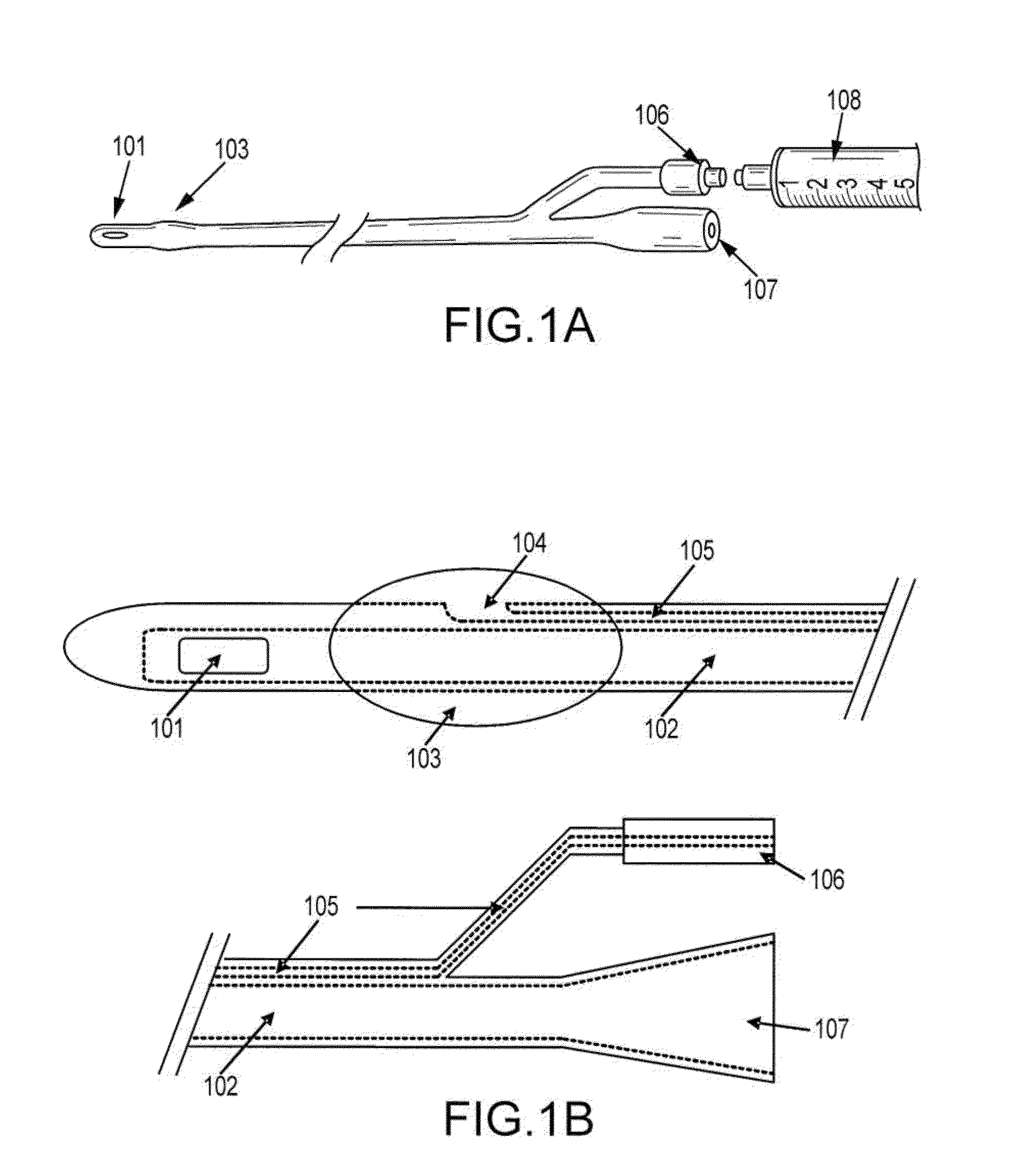Safety urinary catheter
a urinary catheter and catheter technology, applied in the direction of catheters, stents, suction devices, etc., can solve the problems of urinary tract obstruction, urinary tract infections, urinary tract obstruction, death,
- Summary
- Abstract
- Description
- Claims
- Application Information
AI Technical Summary
Benefits of technology
Problems solved by technology
Method used
Image
Examples
embodiments
Further Safety Embodiments
[0101]Without wishing to be bound by any theory, it is believed that the current method of notifying medical personnel to the size of the inflatable balloon for a particular catheter is archaic and incomplete. For example, many standard catheters disclose “5 cc” on the balloon port despite company recommendations to fill the balloon with 10 cc. Indeed, the same is commonly observed for larger balloons, e.g., a 30 cc balloon is recommend to receive 35 cc. Additionally, the appropriate fluid to be instilled is sterile water, according to manufacture guidelines and medical literature. Alternative fluids, such as normal saline, which is frequently used by unknowing medical personnel to inflate catheter balloons, may result in balloon crystallization and a non-deflatable balloon. Accordingly, in certain embodiments of any of the catheters disclosed herein, the catheter is labeled with appropriate indicia (i.e., “filling indicia”) to state the correct amount and ...
example 1
National Incidence and Impact of Non-Infectious Urethral Catheter Related Complications on the Surgical Care Improvement Project
[0115]Introduction. Urethral catheterization is performed for many surgical procedures. Indeed, catheter associated urinary tract infections have been targeted by the Joint Commission and the Centers for Medicare and Medicaid Services (CMS) as “Never Events” as known in the art. No regulatory organization, however, has studied, or sought to improve, non-infectious urethral catheter related morbidity caused by these ubiquitous devices.
[0116]Noninfectious urethral catheter related complications, referred to as catheter related complications, are a patient safety issue that has received little national attention, although they are well documented in the medical literature. See e.g., Sellett T., 1971, JAMA 217:1548; Buddha, S., 2005, Lancet 365:909; Kashefi, C., et al., 2008, J Urol 179:2254; Thomas, A. Z., et al., 2009, BJU Int 104:1109. Catheter related compl...
example 2
Catheter Pressure and Force Studies
Objectives
[0143]The urethral catheter is ubiquitous in medical care. A urethral catheter is inserted in nearly 25% of all hospitalized patient. See e.g., Haley, R W, et al., 1981, Am J Med 70:947-959. Unlike other medical devices, all levels of healthcare professionals from doctors to nursing trainees place urinary catheters. See e.g., Thomas. A Z, et al., 2009, BJU Int, 104:1109-1112; Saint, S. & Lipsky, B A., 1999, Arch Intern Med, 159:800-808. National healthcare efforts have focused on reducing the incidence of catheter related urinary tract infections which have been deemed a “never event” by the Centers for Medicare and Medicaid Services. See e.g., Wald, H L, et al., 2008, Arch Surg, 143:551-777. However, catheter related iatrogenic injuries receive little attention despite the observation that an estimated 0.3% of hospital patients suffer catheter placement injuries. See e.g., Kashefi, C., et al., 2008, J Urol, 179:2254-2257; discussion 2257...
PUM
 Login to View More
Login to View More Abstract
Description
Claims
Application Information
 Login to View More
Login to View More - R&D
- Intellectual Property
- Life Sciences
- Materials
- Tech Scout
- Unparalleled Data Quality
- Higher Quality Content
- 60% Fewer Hallucinations
Browse by: Latest US Patents, China's latest patents, Technical Efficacy Thesaurus, Application Domain, Technology Topic, Popular Technical Reports.
© 2025 PatSnap. All rights reserved.Legal|Privacy policy|Modern Slavery Act Transparency Statement|Sitemap|About US| Contact US: help@patsnap.com



